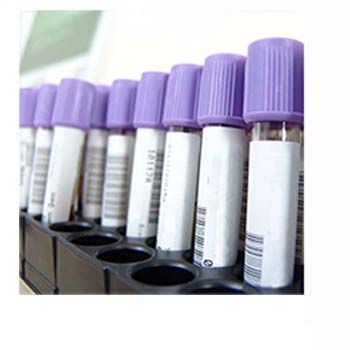For STD (= sexually transmitted disease) screening, it is advisable to be tested for the major diseases that require treatment: HIV, syphilis, hepatitis B, gonorrhea and Chlamydia. The first three of these STD’s can be checked by means of a blood test, whereas the remaining two can be tested with a urine sample in case of a male patient or with a swab from inside the “cervix”, the lowermost portion of the uterus protruding into the vagina, obtained during the gynecological examination of a female patient.
The current HIV screeing test reveals the presence of the viral antigen of type I HIV several days after infection and an increased level of antibibodies after a few weeks. Type I HIV is practically the only type seen in Japan and most other countries with no endemic AIDS. The presence of antibodies to syphilis can be detected one month after contraction at the earliest by the combination of two kinds of test methods.
The level of HBsAg (= hepatitis B surface antigen) begins to rise a few weeks after hepatitis B after contraction of this disease, before its manifestation. These serological tests should be taken at least one month after the last suspicious sexual contact.
Gonorrhea and Chlamydia cause urethritis in men and cervicitis (= inflammation of cervix) in women. The genetic material (DNA) of these microorganisms can be detected within a few days after contraction, with or without apparent symptoms.

STD screening
In case of men, the first portion of the urine produced after at least two hours of not urinating is obtained as a sample to ensure sufficient concentration. A cervical swab can be obtained form a menstruating woman, but bleeding makes it rather difficult and a sample largely consisting of blood should be avoided.
Much more common STDs, genital herpes and HPV (= Human Papilloma Virus, also known as genital warts or condyloma), are not included in the screening. The knowledge of having herpes has no consequence. Once the herpes virus invades a human body, no treatment can eliminate it, while more often one remains unaware of its presence. A blood test is available on request that provides information on herpes infection (present or not, primary or long-existing, oral or genital). HPV infection often disappears spontaneously because the body often develops an immunological reaction to get rid of it, thus limiting the value of a test to discover a hidden infection. The DNA diagonosis for HPV with a skin swab is useful if there are visible growths. With this test it is possible to find out if the virus, if present, belongs to the high-risk or low-risk group, "risk" being that of turning infected cells into cancer.